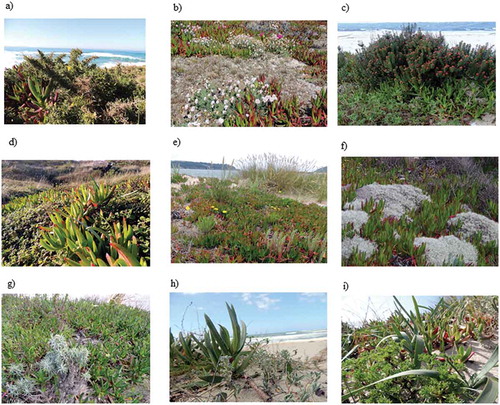Figures & data
Table 1. Main diagnostic characters for Carpobrotus edulis and C. acinaciformis from Wisura and Glen (Citation1993) with an addition from Gonçalves (Citation1990).
Figure 1. The Carpobrotus complex in the invaded range at different development stages. a) Detail view of C. edulis flowers with yellow petals, fading to pink when aging, and leaves with equilateral triangular section; b) Detail view of Carpobrotus sp., tentatively identified as C. acinaciformis with petals rose purple and yellow filaments, and leaves with isosceles triangular section. See section on taxonomy for a more detailed information on identification conflicts of the species.
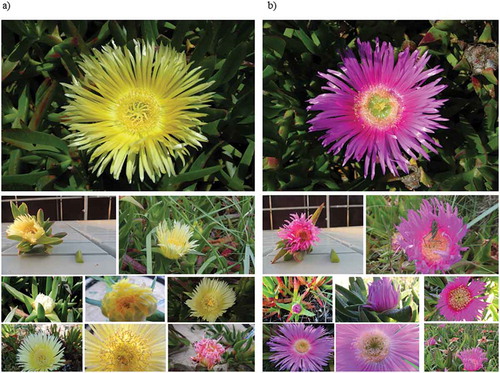
Figure 2. Coastal areas inhabited by Carpobrotus in its native range (South Africa). a) View to Hout Bay; b-c) Cape Point; d) Kleinmond; e) Hawston.
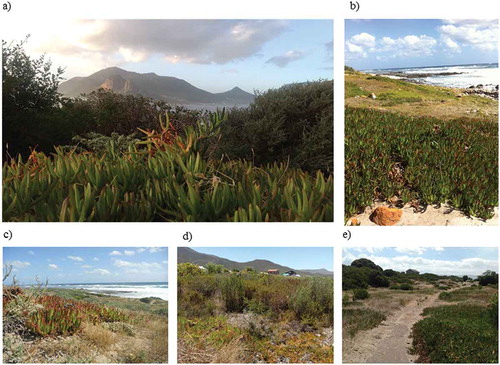
Figure 3. Distribution map of C. edulis and C. acinaciformis in Western Europe. The map is given according to GBIF (2017) and the Fédération des Conservatoires botaniques nationaux (Citation2013) with some modifications based on our unpublished data on the species. Species as in the original source, see text for identification problems.
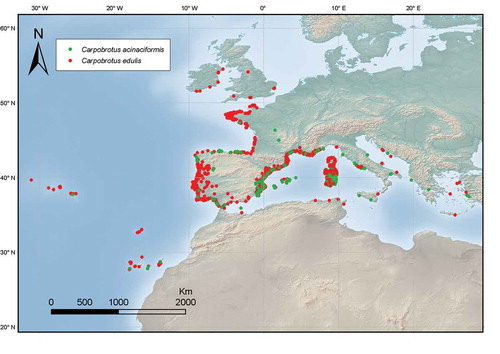
Table 2. Oldest records for Carpobrotus from Europe stored in GBIF as of 1 May 2017. Only collections dated before 1950 are included. Complete data sets available at http://doi.org/10.15468/dl.hzsn8l (as C. acinaciformis) and at http://doi.org/10.15468/dl.lkoncy (as C. edulis).
Table 3. Main habitats invaded by Carpobrotus in Europe according to the EUNIS vegetation codes (Moss Citation2008), Habitats Directive habitats codes (Schaminée et al. Citation2012) and main phytosociological classes (Mucina et al. Citation2016).
Figure 4. Coastal areas invaded by Carpobrotus at the Iberian Peninsula (a, b, d, f, g, h), Italy (c), France (e), and Azores (i); (a-d) show the species at sand dunes ecosystems; (e-f) at cliffs; (g-i) at rocky coastal habitats.
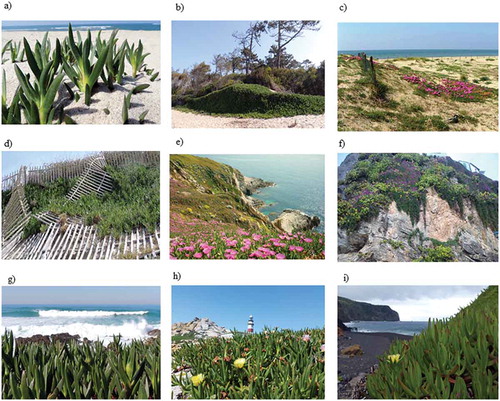
Table 4. List of pathogens found on Carpobrotus edulis collected along roadsides in California (MacDonald et al. Citation1983; MacDonald, Hartman, and Shapiro Citation1984; Schmalzer and Hinkle Citation1987).
Figure 5. Carpobrotus competing with endemic species: a) Ulex europaeus (A Coruña, Spain), b) Armeria pungens (Pontevedra, Spain), c) Corema album (Moledo, Portugal), d) Cistus salviifolius (Pontevedra, Spain), e) Euphorbia paralias, Aetheorriza bulbosa and Ammophila arenaria (Lugo, Spain), f) Centaurea horrida (Sardinia, Italy), g) Helichrysum picardii (Pontevedra, Spain), h) Medicago marina (Viana do Castelo, Portugal), i) Pancratium maritimum and Artemisia crithmifolia (Pontevedra, Spain).
